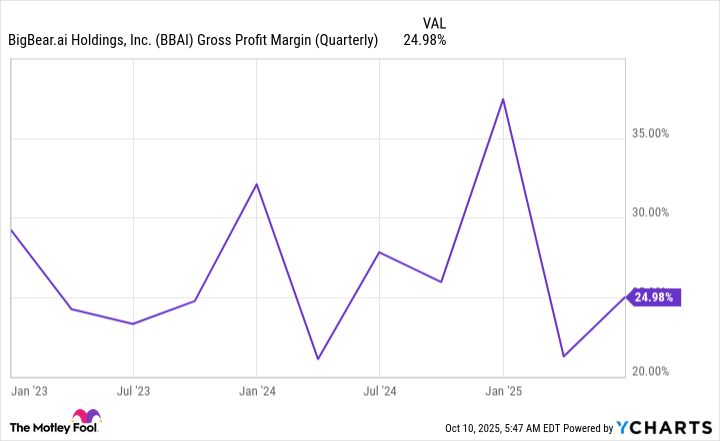BigBear.ai (BBAI 4.57%) has become one of the more popular artificial intelligence (AI) stocks to invest in. The idea behind investing in it is fairly simple. BigBear.ai is a small company that's operating in a rapidly growing space. Small companies like this have the potential for explosive gains if their product takes off, which could make investors a fortune.
For this analysis, I'm going to use 100-fold returns as the baseline for whether BigBear.ai could make investors millionaires by itself.
Is this realistic? Or are there better places for your money?

Image source: Getty Images.
BigBear.ai is developing custom solutions for a handful of clients
BigBear.ai draws a lot of comparisons to Palantir (PLTR 0.57%), as it's heavily focused on government and government-adjacent businesses. BigBear.ai's largest contract is with the U.S. Army to develop its Global Force Information Management Objective Environment system. Once complete, this software system will allow the U.S. Army to be "properly manned, equipped, trained, and resourced" for whatever mission is at hand.
Another area where BigBear.ai is seeing success is with airport security. BigBear.ai's product helps analyze who is coming through international terminals to ensure that those who are arriving are who they say they are. This technology has been deployed in many domestic airports as well as a few internationally, with more being added each quarter.

NYSE: BBAI
Key Data Points
However, the issue with BigBear.ai is that none of these products can be sold to a wide variety of clients at scale. There are clients for these products, but it's not a widespread commercial offering. This is an immediate red flag, and it concerns me about the rest of BigBear.ai.
BigBear.ai's growth leaves a lot to be desired
We're in the golden age of artificial intelligence investments, so if a company is centered around AI, then it must be producing excellent growth. Unfortunately, BigBear.ai doesn't fall into this category. In the second quarter (ended June 30), BigBear.ai's revenue fell 18% year over year to $32.5 million. This weakness can be attributed to its U.S. Army contract, as the government spending clampdown affected its contract value.
However, companies like Palantir saw their U.S. government revenue rise 53% year over year in Q2, so this weakness in government AI spend is only being felt by BigBear.ai. That's a bad sign for a company that's operating in the AI space, considering the backdrop. This is a second red flag, and it's not looking very good for BigBear.ai.
Another issue I have with BigBear.ai is its margin profile. As mentioned above, BigBear.ai develops custom solutions for its clients, which makes each product unique and hard to market to a wide audience. This means each solution must be developed from scratch every time, which makes BigBear.ai more like a consulting business than a true software-as-a-service (SaaS) business.
Because of how it's choosing to run its business, BigBear.ai has an abysmal gross margin, at least for a software company.
BBAI Gross Profit Margin (Quarterly) data by YCharts
Most SaaS companies generate between 70% and 90% gross margins. BigBear.ai has operated in the 20% to 30% range, which significantly hampers its upside. Palantir has grown to become a popular stock because its profit margin is above 30%. In its current form, that feat is impossible for BigBear.ai because the cost of its product is much greater.
As a result, I think investors should steer clear of BigBear.ai. Its low gross margin from its lack of a broad-purpose product hurt the company's future, while negative revenue growth in the most exciting time for AI stocks is a serious problem. BigBear.ai may be able to turn around its growth prospects in the near future, but unless there's a fundamental change in how the company operates, the low gross margin is here to stay.
I think there are far better places to invest in AI than BigBear.ai, and investors should look to those solid opponents first.
